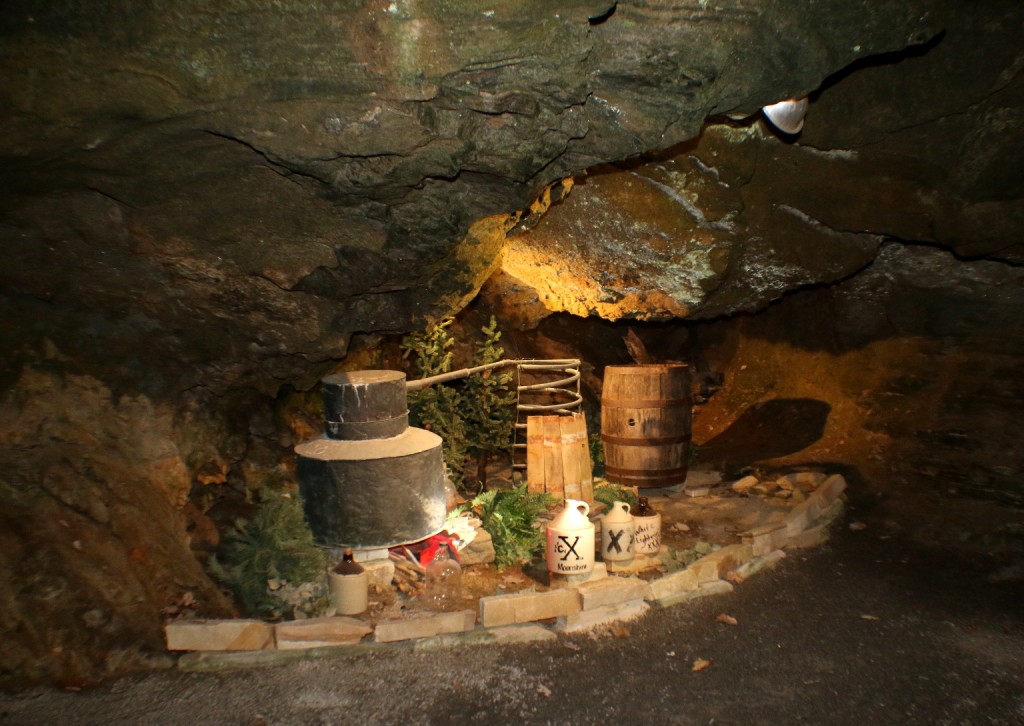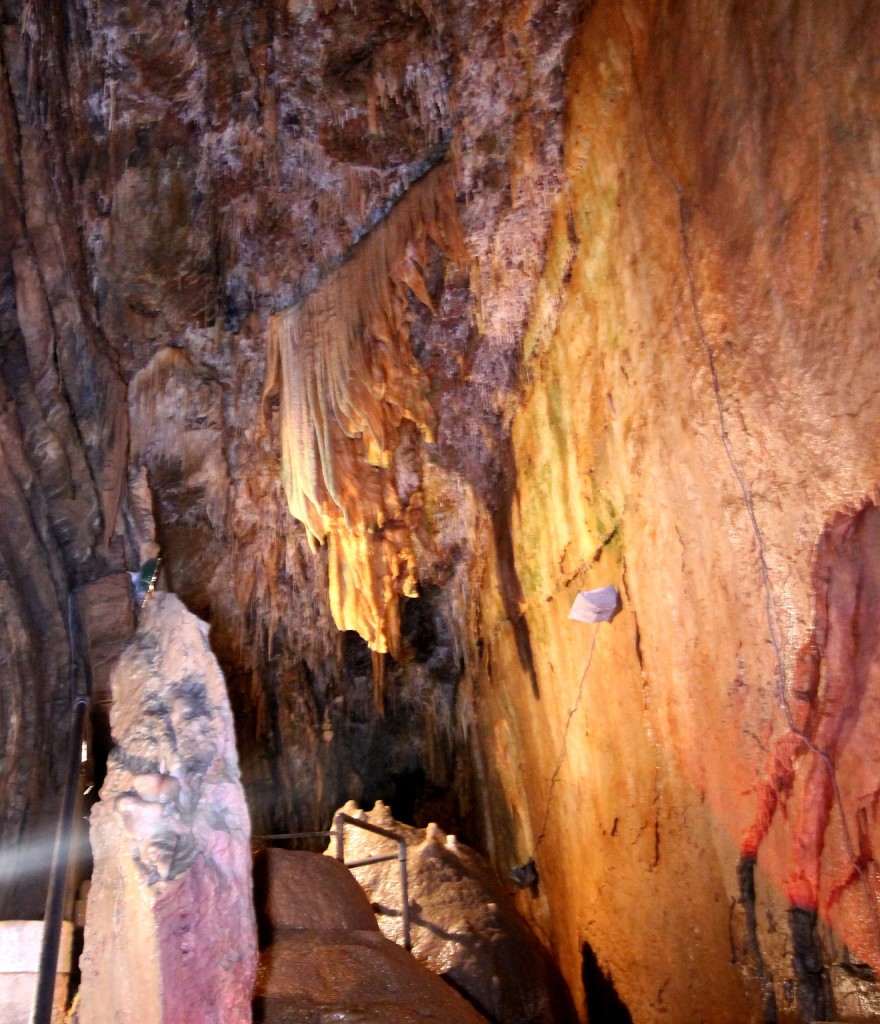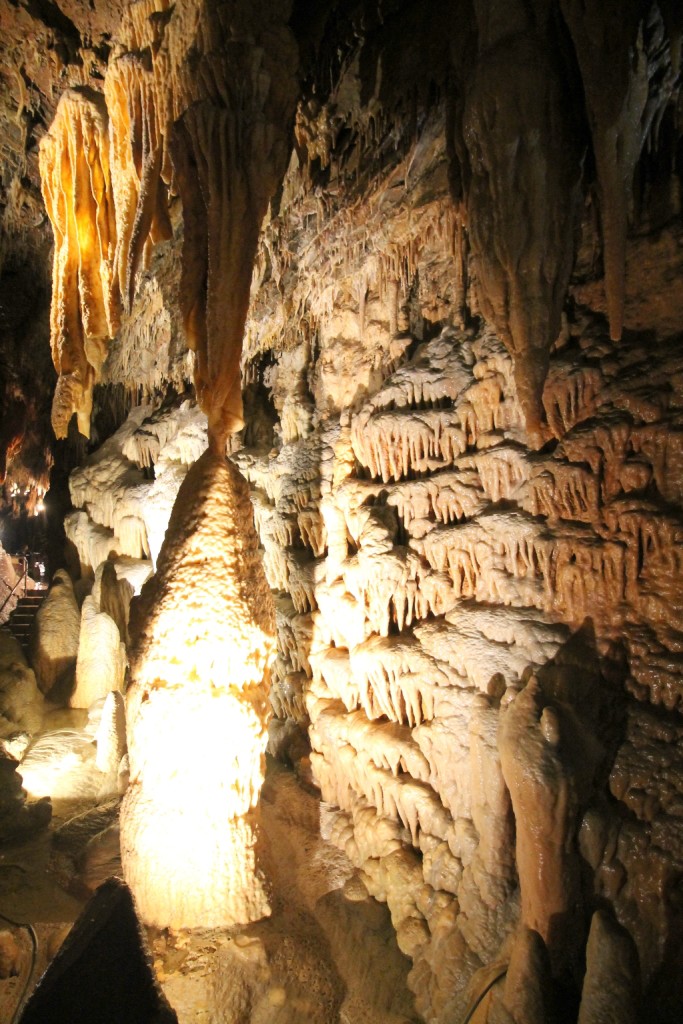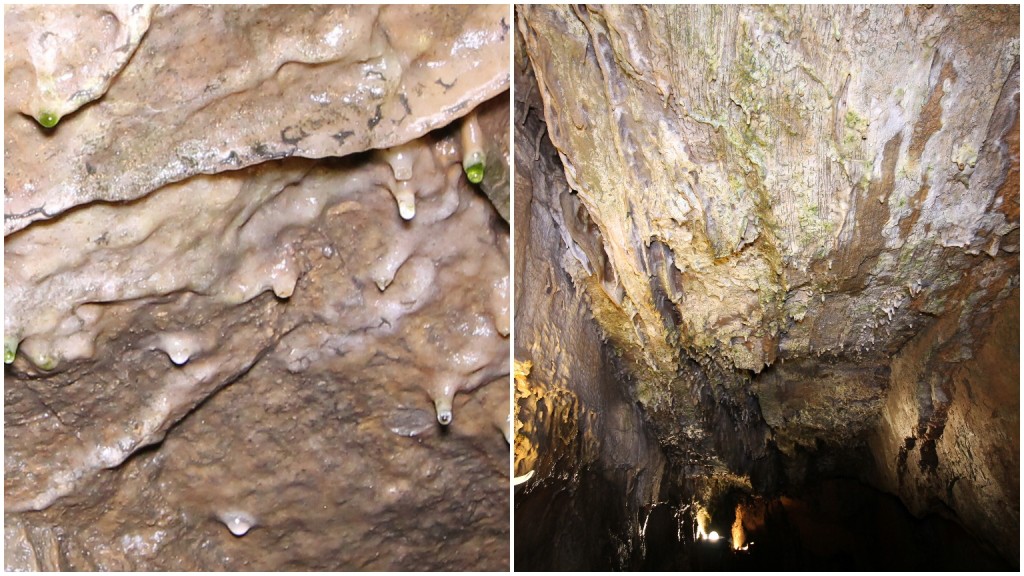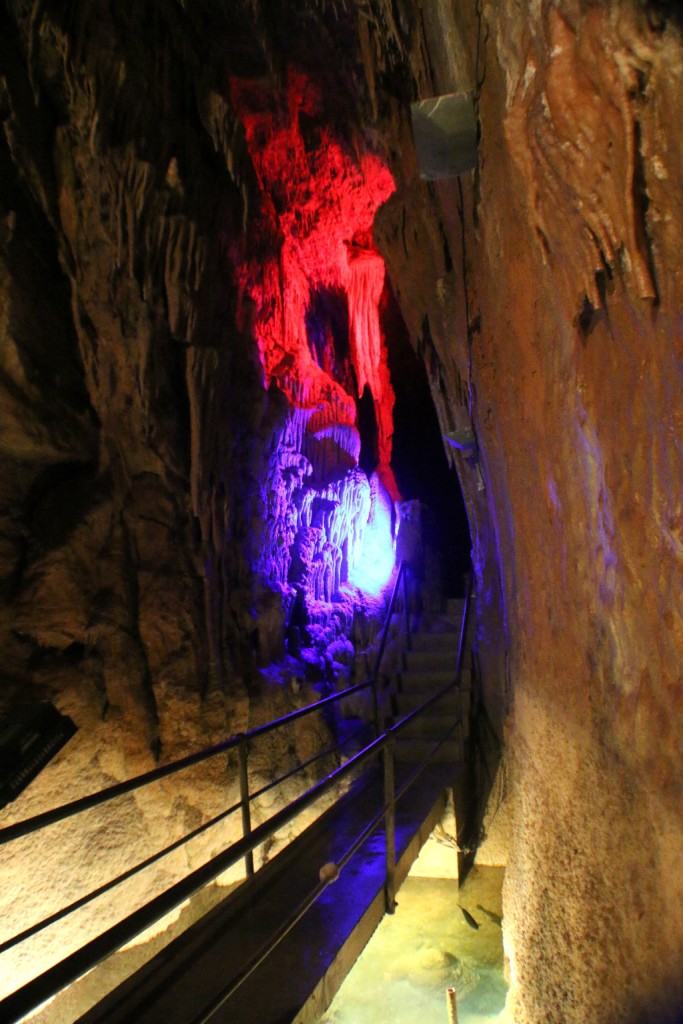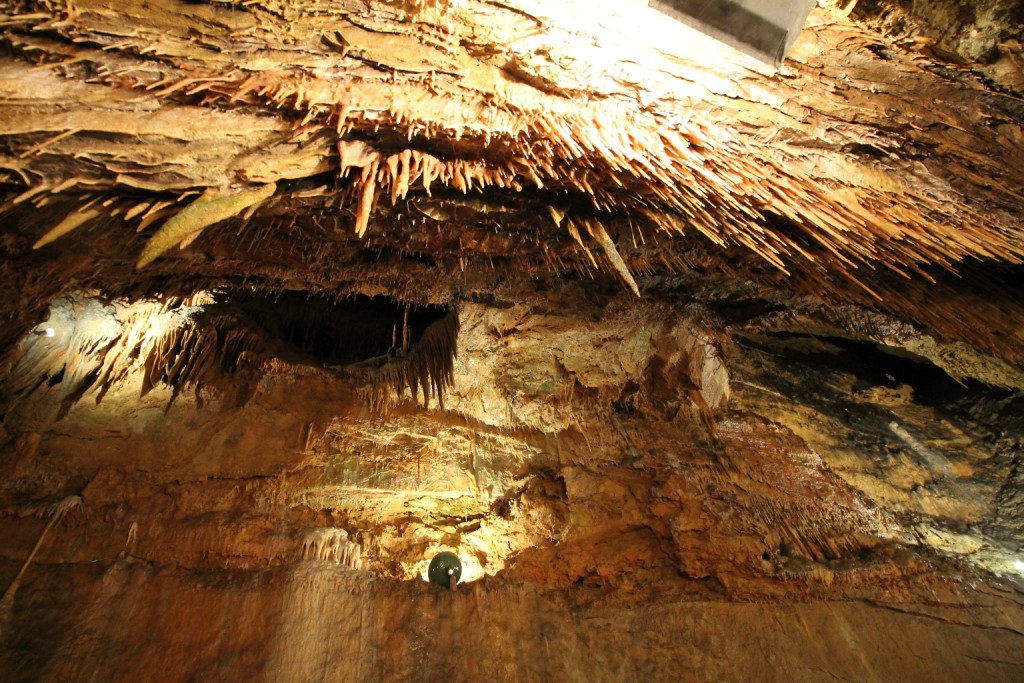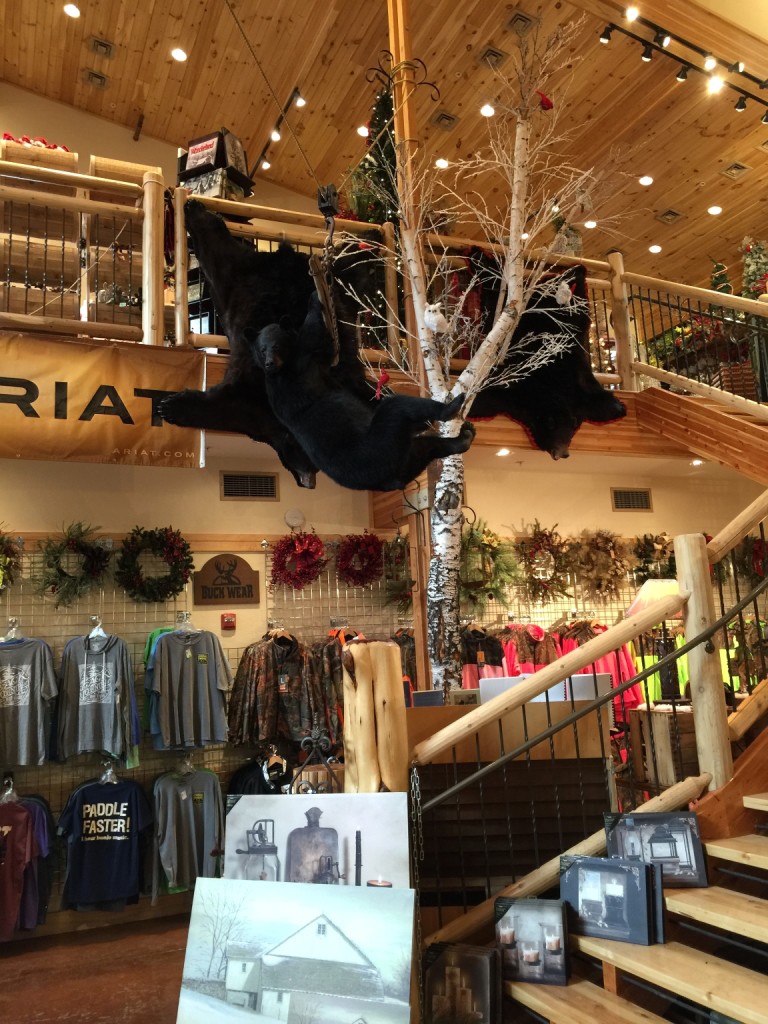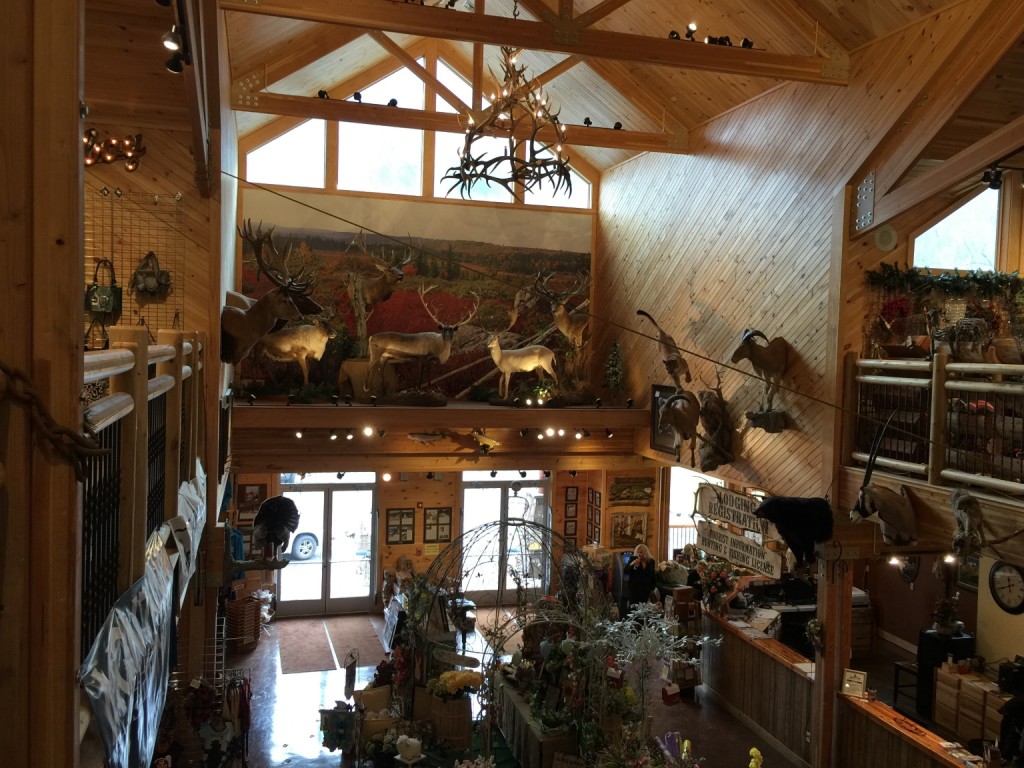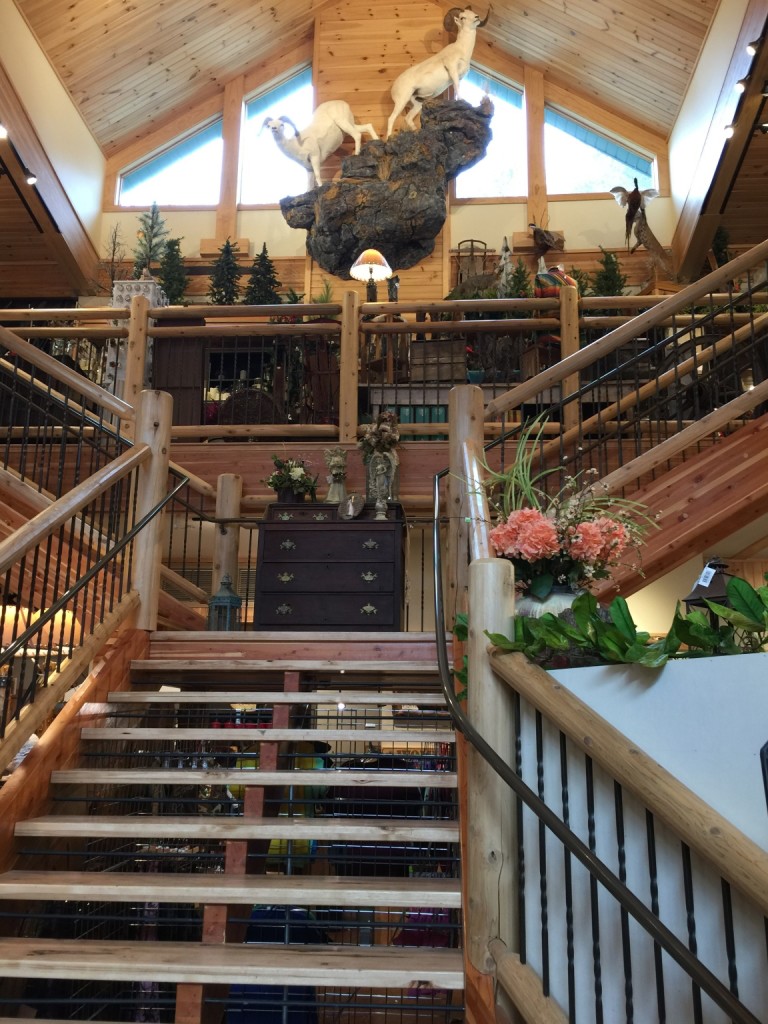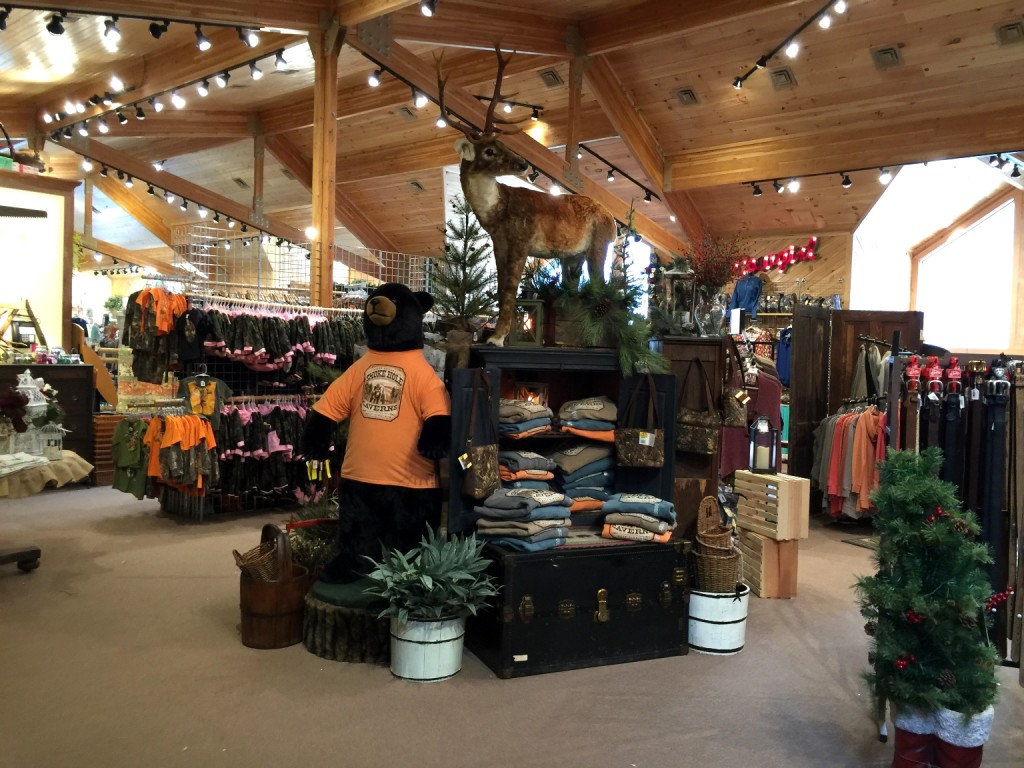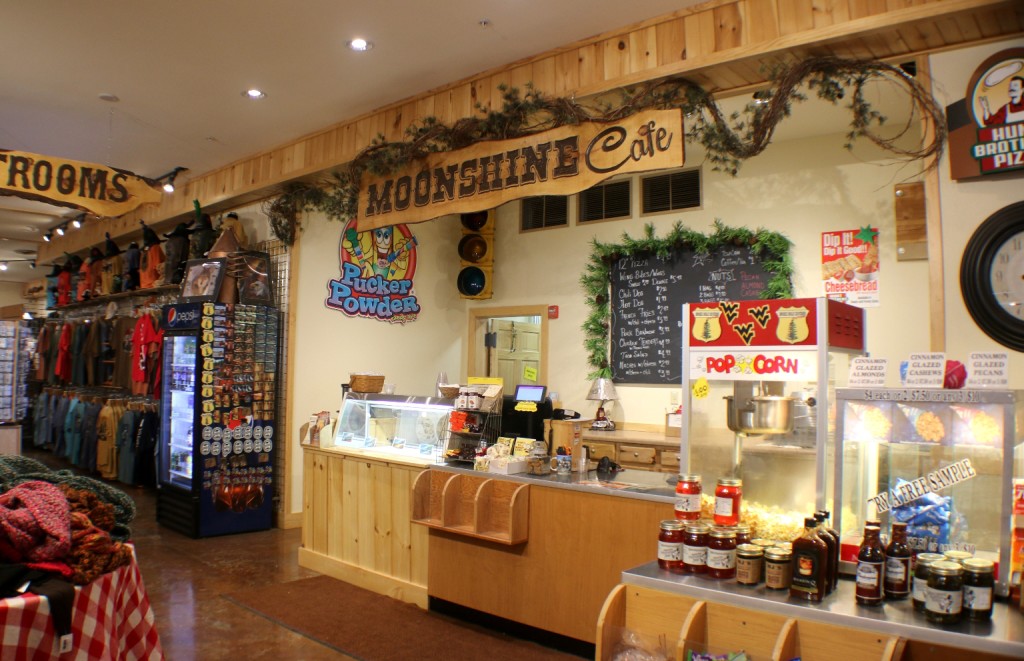Last time on our way back from Snowshoe, Dave and I stopped at Smoke Hole Gift shop, but didn’t tour the caverns. This time returning from Spring skiing at Silver Creek, we decided to actually take the tour.
The Caverns were made millions of years ago after the North American and African plates collided to create the Appalachian Mountains. According to the resort’s website, Smoke Hole Caverns is an active cave, accumulating 1 cubic inch of new deposits every 120 years. The Smoke Hole Caverns opened for public tours in 1940.
Some of the cave’s interesting formations include the world’s longest ribbon stalactite, genuine Crystal Cave Coral Pool, found in only one other cavern in the world, and the second highest ceiling of any cavern in the eastern United States.
Here is Queen’s Canopy, 13 million years old draperies, inside Smoke Hole Caverns.
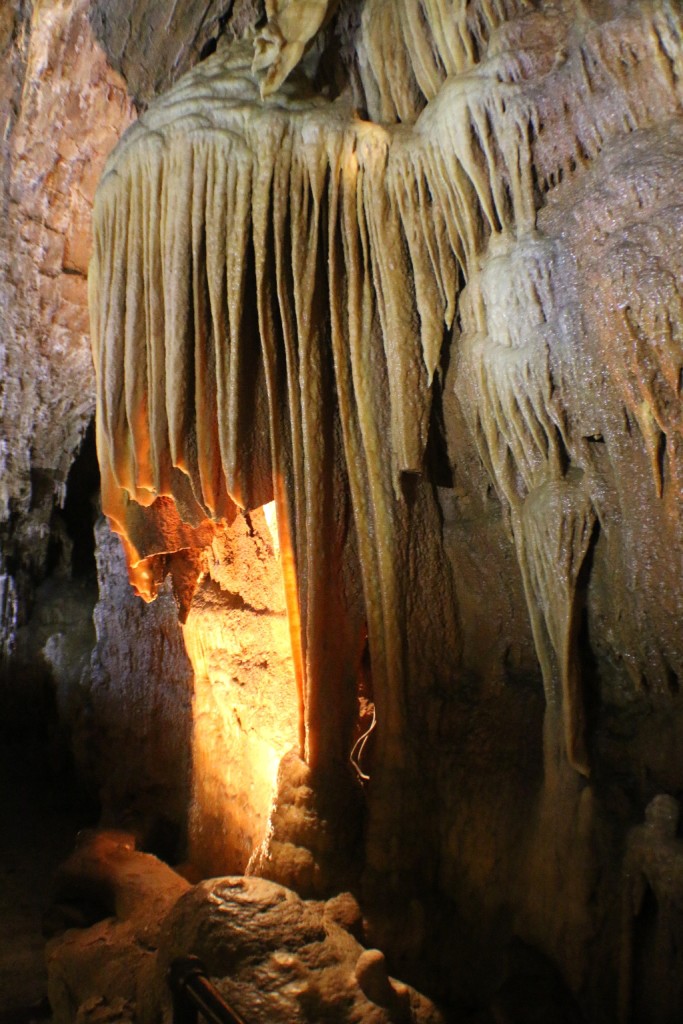
Smoke Hole Caverns are located near the Smoke Hole Canyon from which the cave takes its name. They are located on WV 28 highway, 13 km west of Petersburg. Several signs along the road warn you about the caverns, so they are hard to miss.
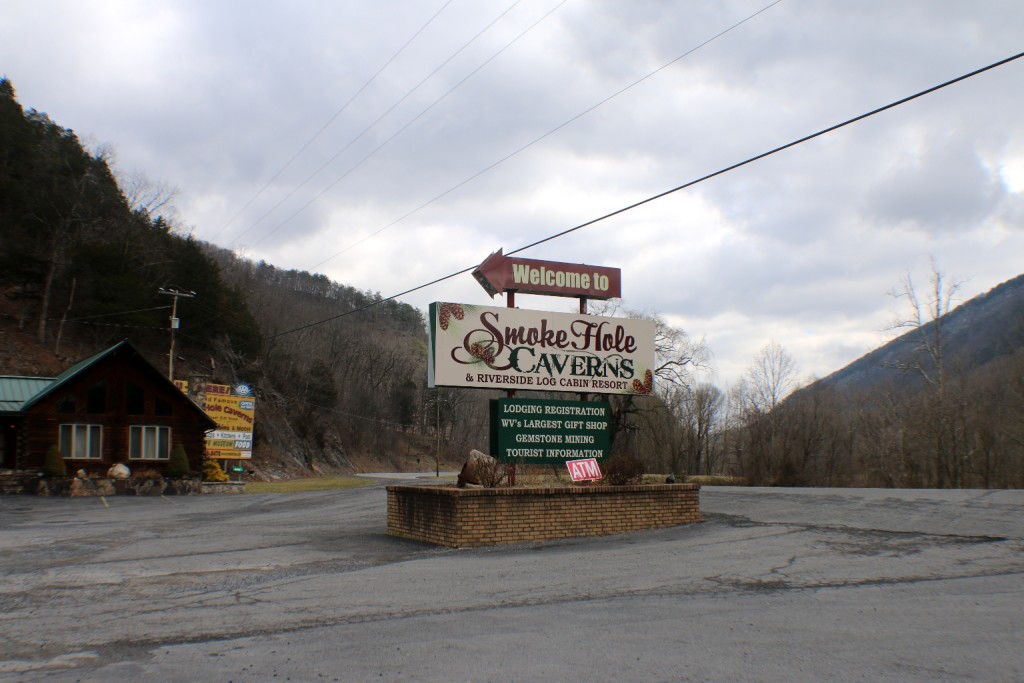
The tickets for the caverns tour are sold inside the Gift Shop, which is the largest gift shop in West Virginia.
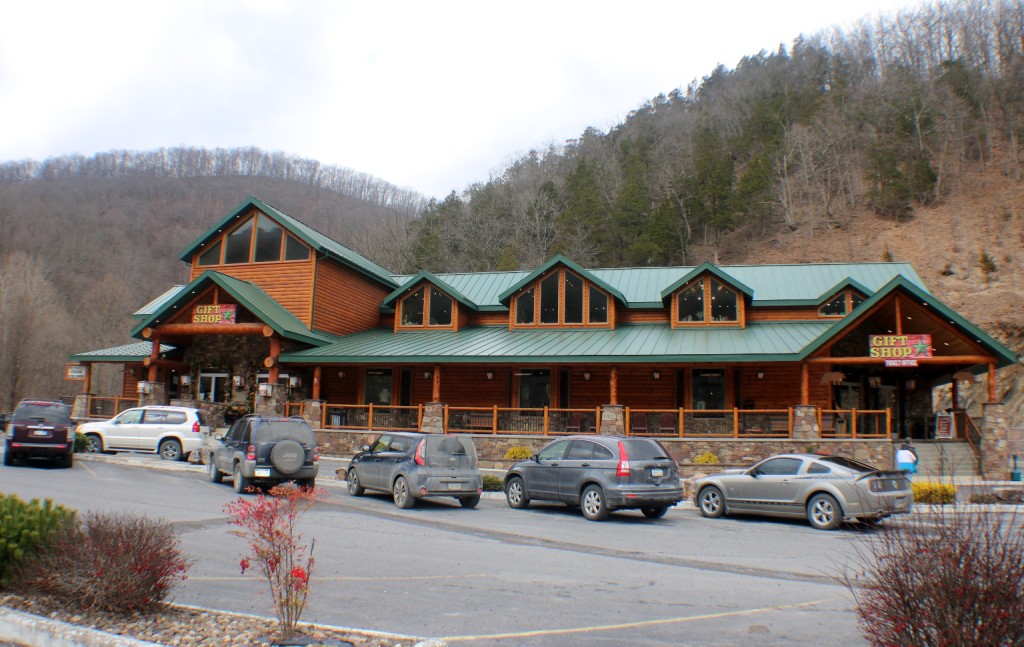
We waited about 20 minutes for the caverns tour after we bought the tickets. There was only one more couple for the tour, so we took pictures of each other with the caverns sign in the background.
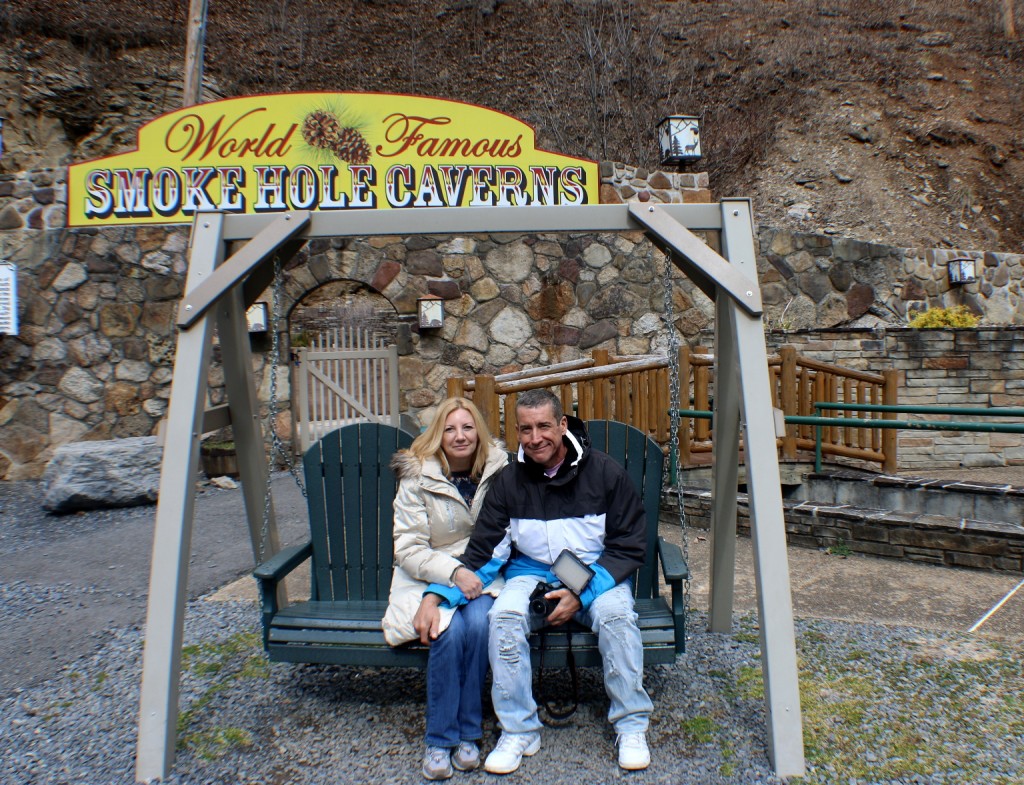
The young girl, the tour guide, showed up shortly, unlocked the gate and we moved up towards the caverns entrance.
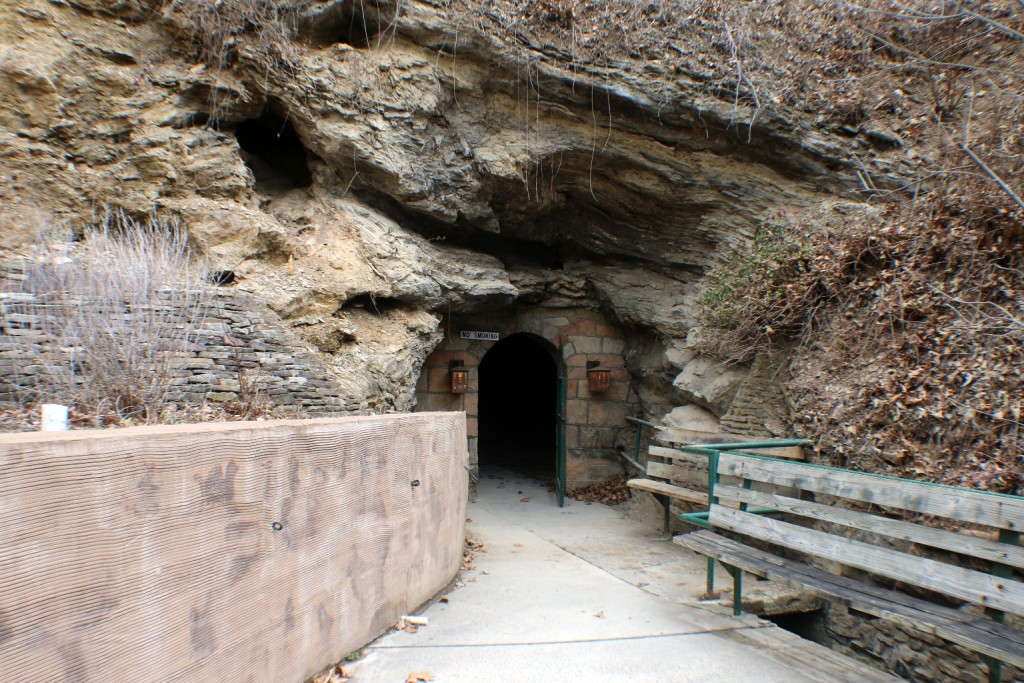
The tour guide told us a little history about the caverns, which have been used for different purposes throughout the years: from hiding ammunition and wounded solders by both the Union and Confederate troops during the Civil War to smoking meat and moonshine distribution.
Although by more official references, the caverns got their name from Smokey Hole Canyon. A different version states that the caverns got their name because of the Seneca Indian tribe who used the caverns for smoking wild meat. The smoke from the slow-burning fires would flow out into the surrounding valley, happening so frequently that the settlers named the area Smoke Hole Caverns.
Local folklore has it that the cave was utilized during Prohibition by moonshiners. There is only one entrance into the caverns which made it secure and with an ever present supply of fresh water it was a perfect place to produce moonshine.
Here is a display of more of its man-made history in the picture below, such as the corn whiskey still and jugs. The amount of X signs on the jugs identifies how many times the whiskey was distilled, the more Xs, the stronger whiskey.
Magnificent cave formations are the results of millions of years of intricate processes and trillions of drops of mineral laden water seeping through the limestone bedrock, which creates spectacular stalactites, stalagmites, helictites, flow-stones, columns and dazzling multi-colored formations that can be seen in the WV Underground.
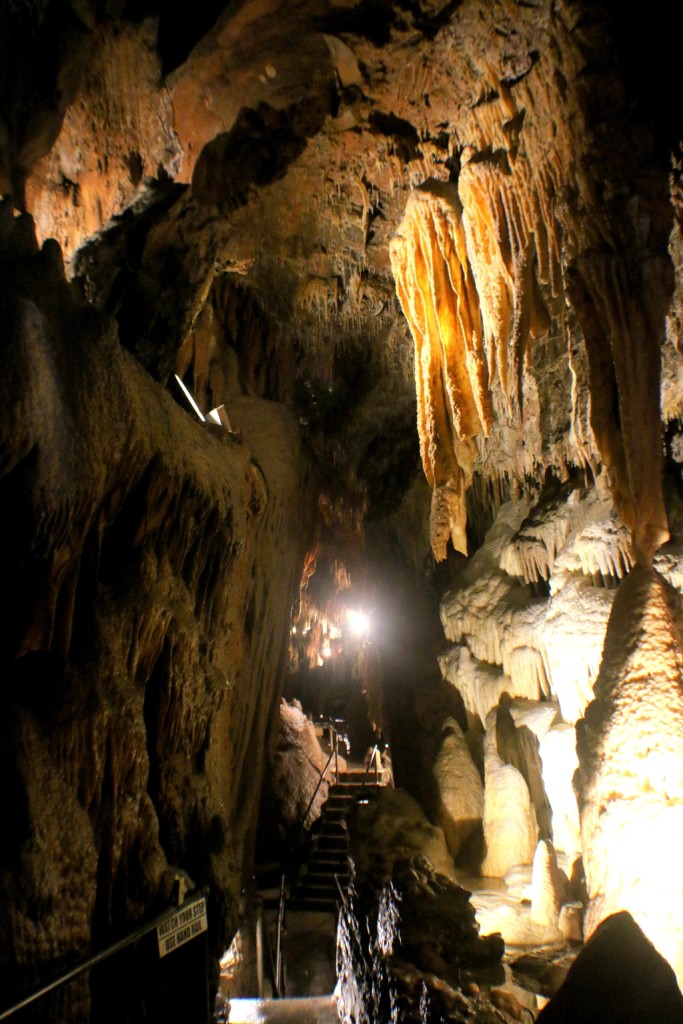
Stalactites are the ones that grow from the ceiling like in the picture below. Stalactites form water drips from the cave ceiling. Here are we approaching the world’s largest ribbon stalactite.
This is is a huge limestone formation, which weighs in at approximately two-and-a-half tons and measurs 13 by 16 feet. Closer look of the largest ribbon stalactite.
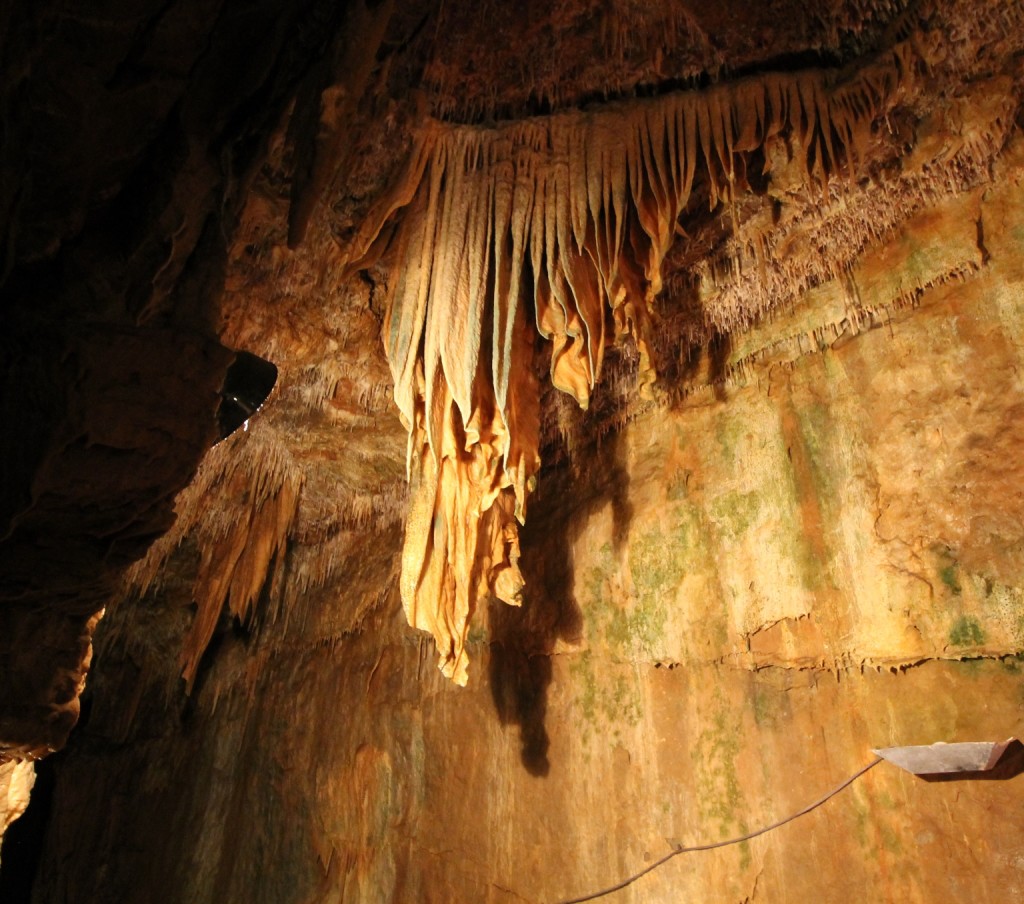
The furthest chamber into the cave is called the Queen’s Chamber, where there is a natural pool of freezing cold water called the Queen’s Bath. Over the Queen’s Bath there is a large draperies or curtains formation called the Queen’s Canopy. The draperies are formed, when water slides along cracks and crevices in the cave ceiling and walls.
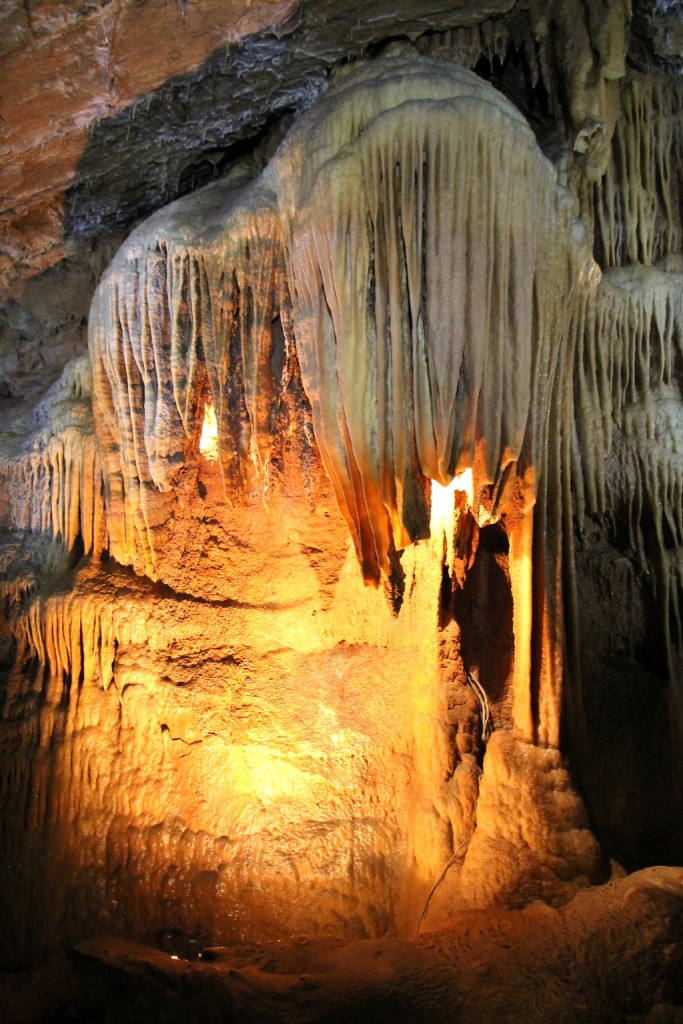
The stalagmites are the ones growing from the floor.
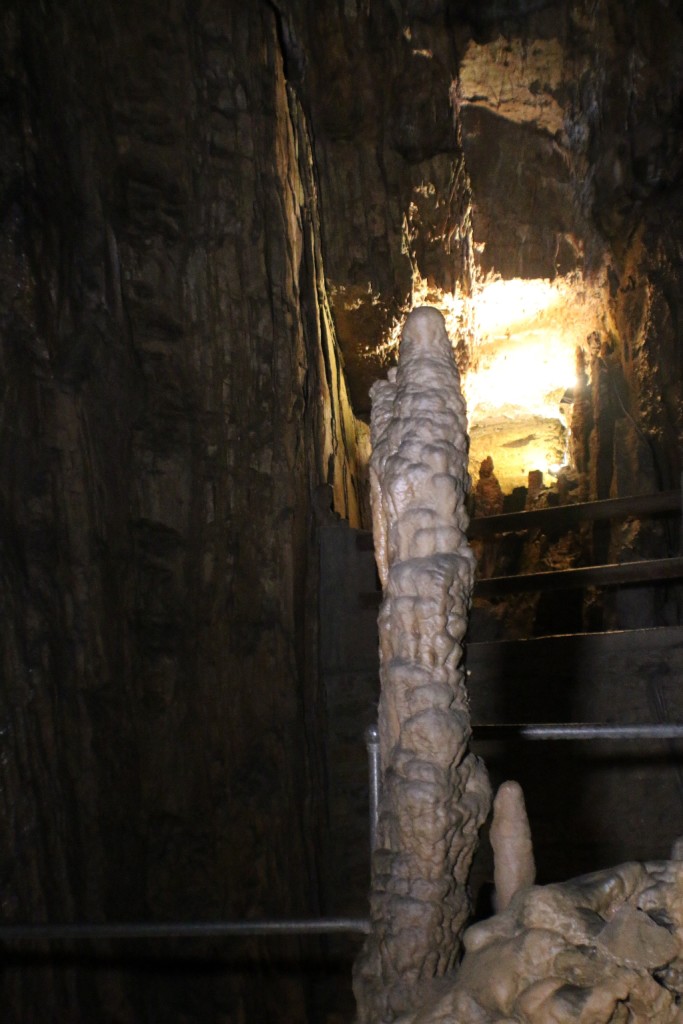
A Column is formed by the joining of a stalactite and stalagmite together or growing into each other.
The soda straws stalactites are actively forming. A zoom onto the soda straws on the left shows the water droplets on the ends. In these conditions, soda straws can grow at maybe an inch per century.
Alaskan Ice Glacier, formed from dripstone stalactites and stalagmites, resembles mounds rising from the floor. It looks very pretty with the colored light projection. Here is the deepest crystal cave lake with golden trout swimming in it under the bridge.
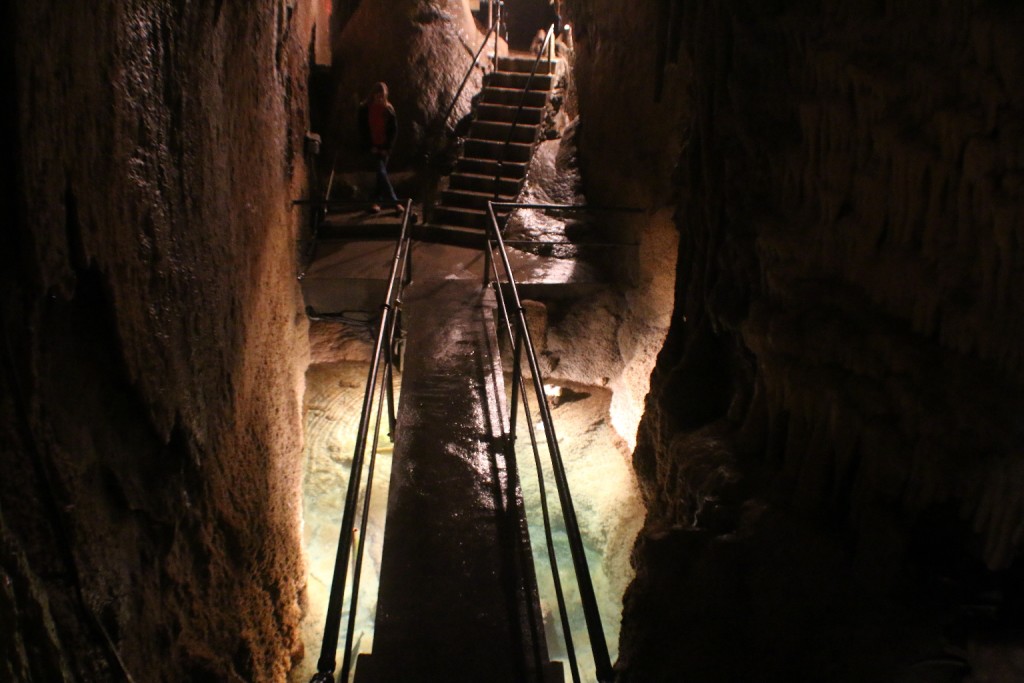
Golden Rainbow Trout in the crystal cave pool.
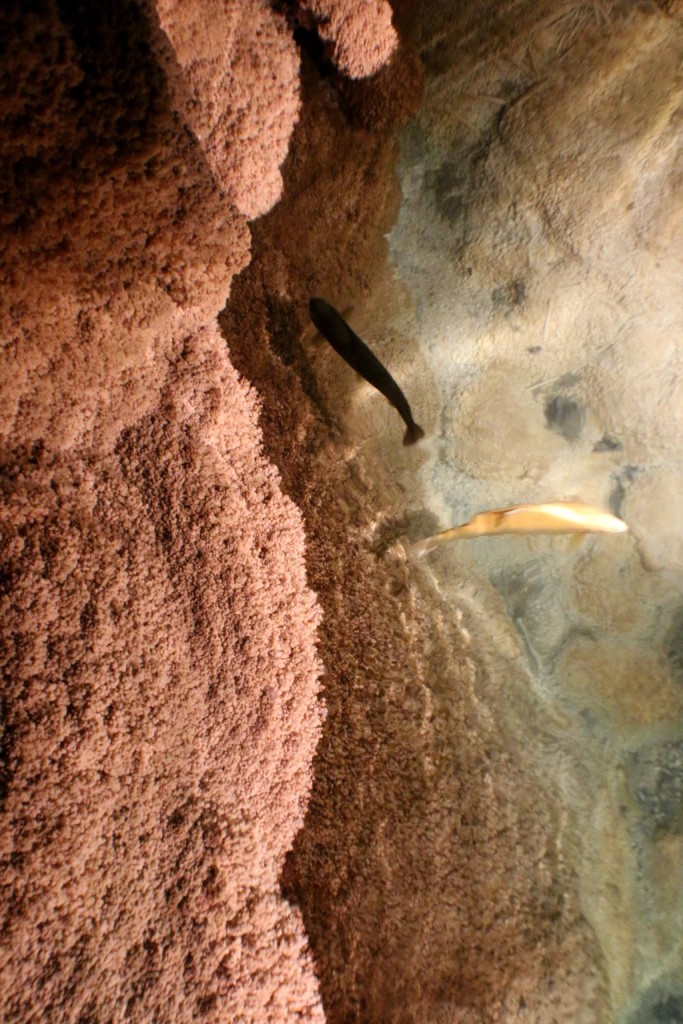
Flowstones are on the cave’s wall. Flowstone is a layer of calcite that is deposited on the surface by flowing water. It is a product of flowing water rather than drops.
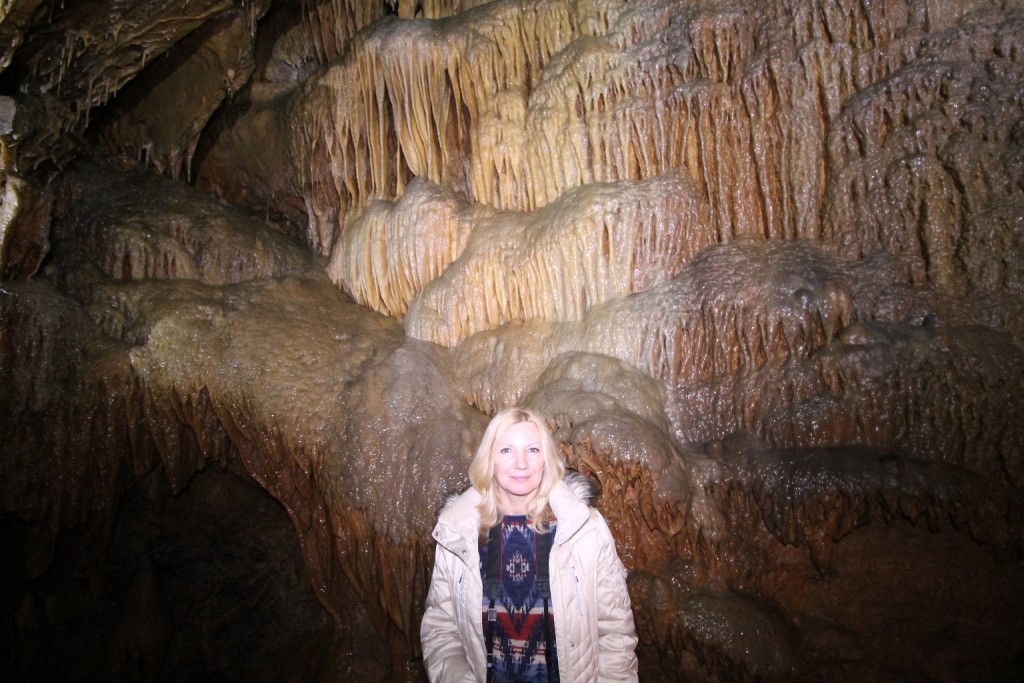
Numerous pencil stalactites.
Some stones in the caverns obtained animal-like shapes. Here is the alligator.
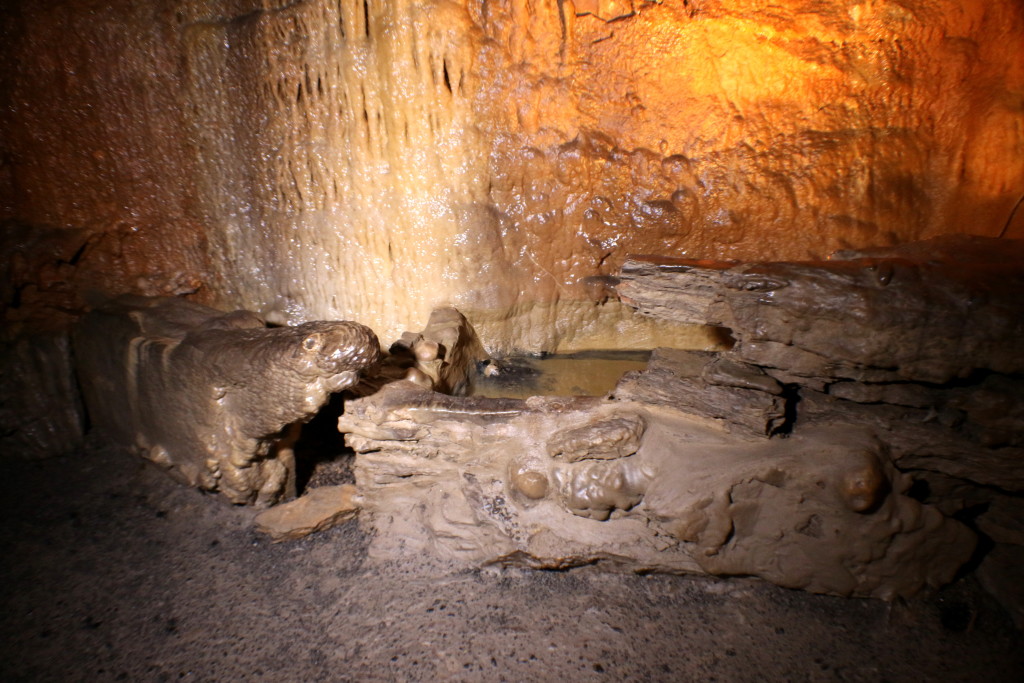
Some caverns formations resemble food. Here is a line of bacon.
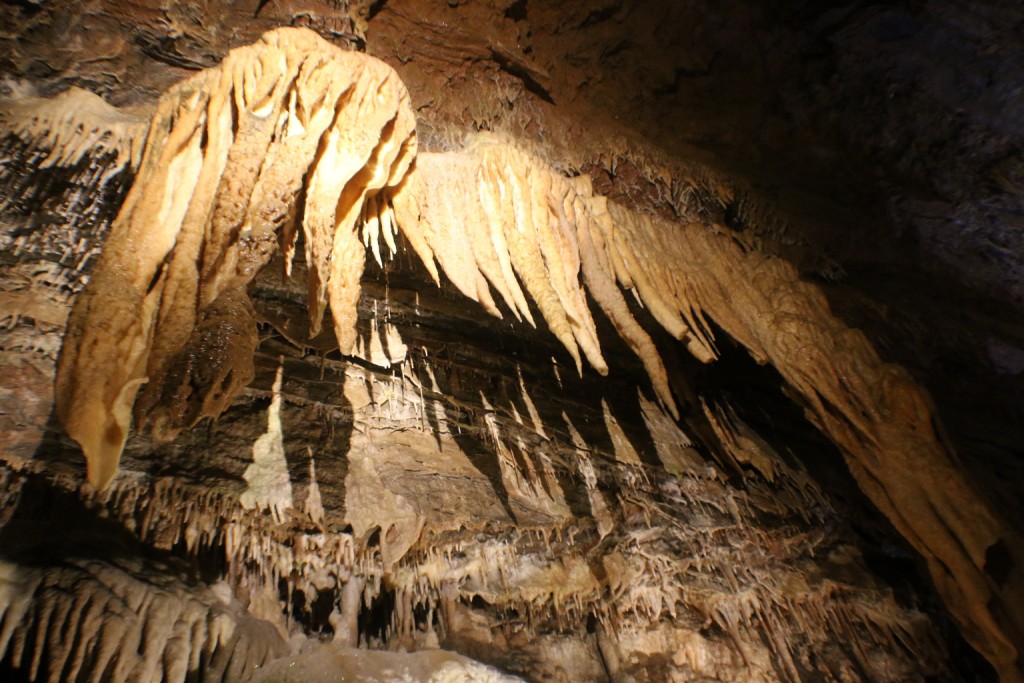
Here are 2 turkeys hanging on the top right.
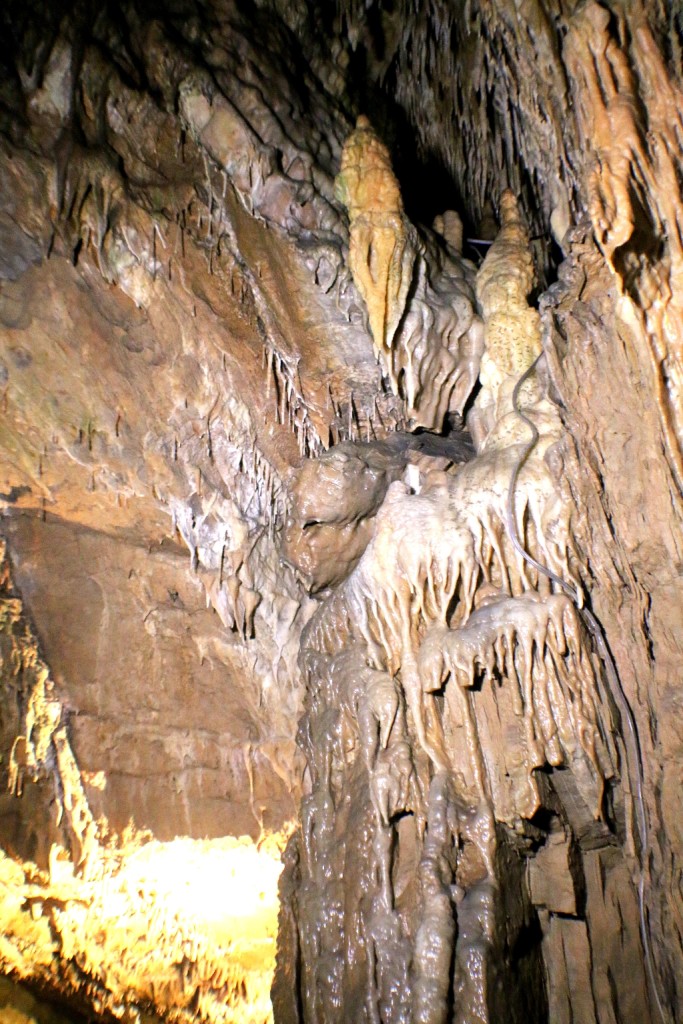
Fried eggs. Don’t they look real?
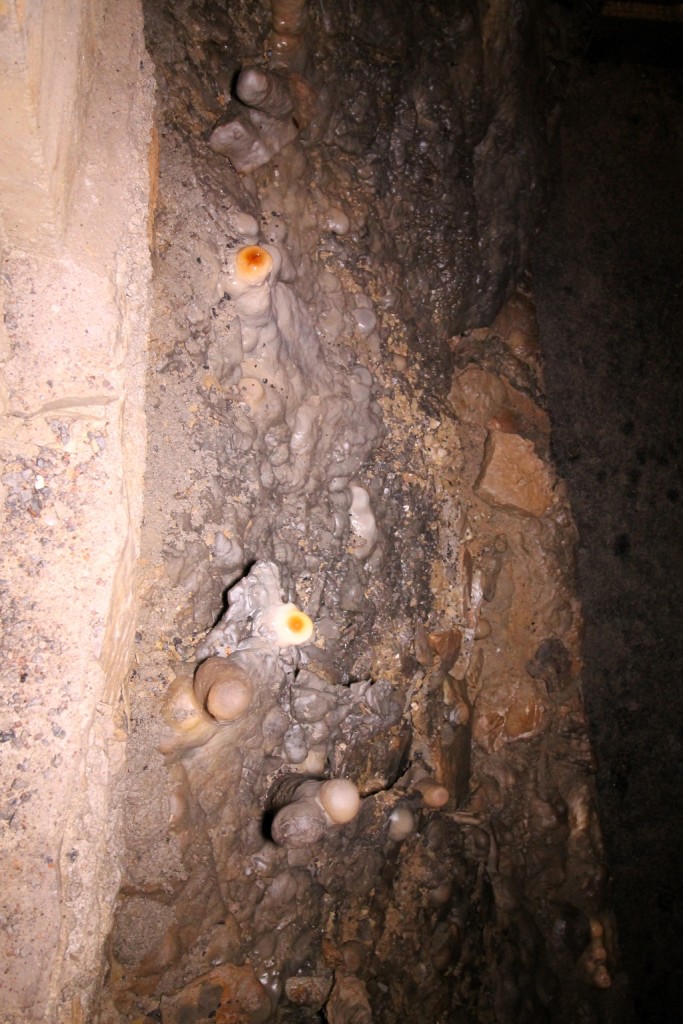
Here are couple of pictures next to the stalagmite taken at the end of the tour, on our way out of the caverns.
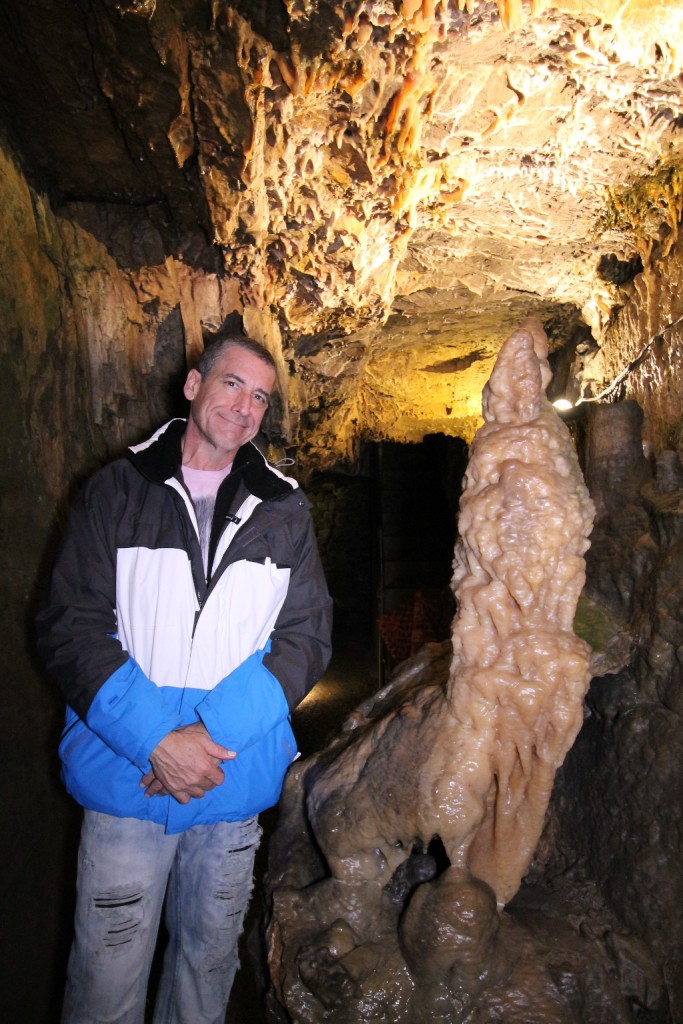
These caverns aren’t as big as either nearby Seneca Caverns or the much more famous Luray Caverns in Virginia, but they have their own roadside charm.
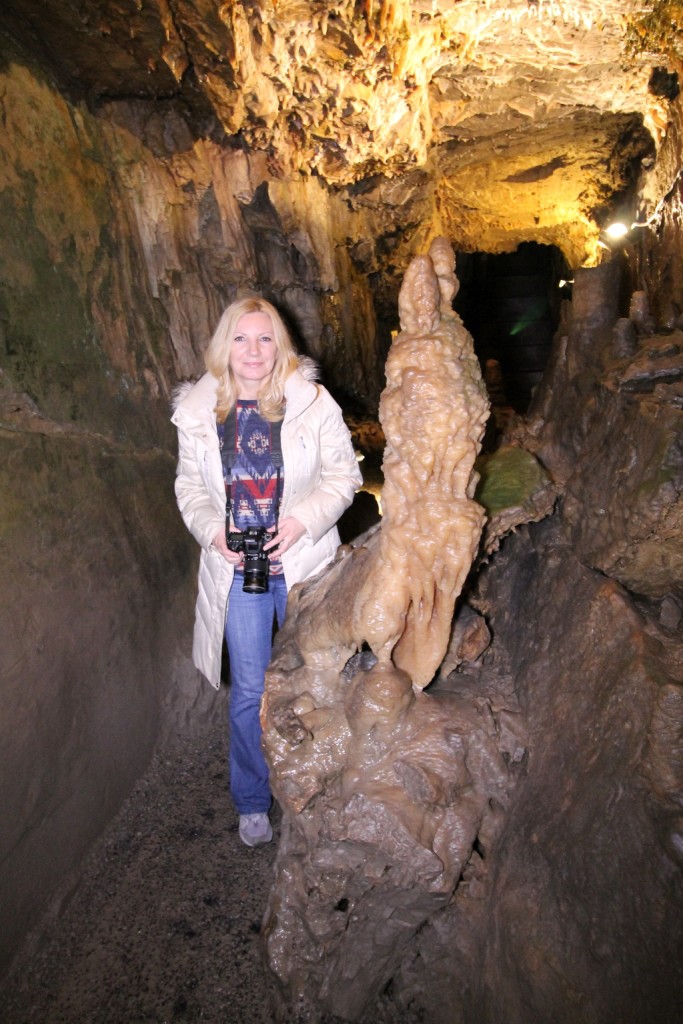
After that we spent some time in the Gift Shop, that I mentioned above. The Gift Shop features an award winning Wildlife Gallery, with specimens from as far away as New Zealand, Canada, New Mexico and others.
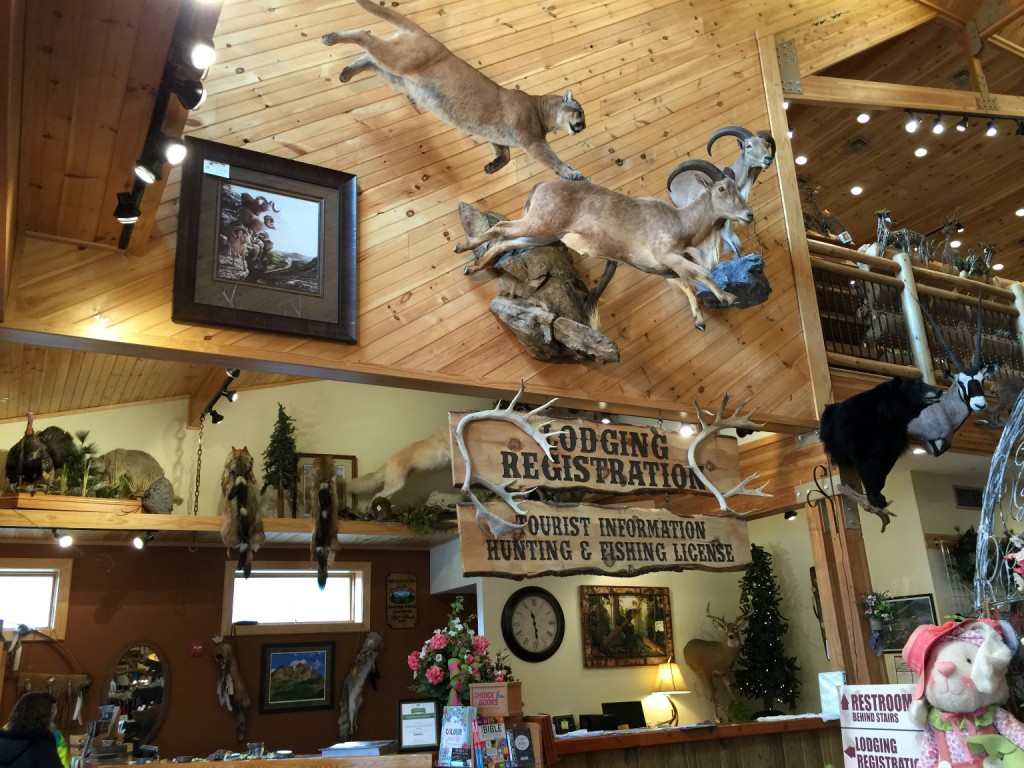
This store is unique and absolutely beautiful. We bought a jar of natural honey, some delicious glazed almonds & cashews, and had lunch in the Moonshine Café inside the store.
